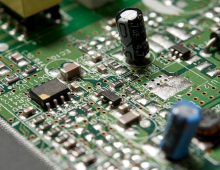
Infineon shrinks flash memory chips
Scientists at German semiconductor manufacturer Infineon Technologies have developed what they claim to be the world's smallest non-volatile flash memory cell.
The new memory cell, measuring 20 nanometers or approximately 5,000 times thinner than a human hair, could lead to the availability of memory chips with a capacity of 32Gb, which is eight times the capacity of chips currently available on the market, Infineon said Thursday.
Details about the new flash memory breakthrough were presented at the International Electron Devices Meeting of the Institute of Electrical and Electronics Engineers in San Francisco.
Nonvolatile flash memory chips are becoming increasingly popular as mass storage media for devices such as digital cameras, camcorders and USB sticks.
The most advanced non-volatile flash memory devices available today, according to Infineon, are able to permanently store one or two bits of information per memory cell without a supply of voltage. Such devices are about 90nms in size. Efforts to shrink them have proven difficult due to nanoscale physical effects.
Infineon scientists overcame this challenge by creating a three-dimensional structure with a fin for the transistor that acts as the heart of the memory cell, the company said. The special geometry minimizes unwanted effects and significantly improves electrostatic control, compared to today's flat transistors.
The Infineon device, called Fin Field Effect Transistor, stores the electrons that carry the information in a nitride layer, the company said. This layer lies electrically isolated between the silicon fin and the gate electrode. The fin, which is 8nms thin, is controlled by the 20 nanometer-side gate electrode.
From DIGIT





















